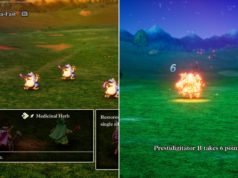In this series on Android development with Kotlin, we learn object-oriented programming, including generic, delegation, collections, and overloading operators.
Let’s be friends:
Comment ( 0)
Join the DZone community and get the full member experience.
I introduced OOP aspects for Kotlin in Part 3 and Part 4. In this article of my series, I will continue to introduce some other interesting aspects of OOP such as generic, delegation, collections, and overloading operators.
Generics are basically used to define which types a class can hold and which type an object currently holds. An example:
This class now can be instantiated using any type:
If we want to restrict the genericsExample to non-nullable types, we just need to do:
If we compile previous code, we will see that ge3 throws an error:
Now, we try to compile the following code:
gel2 will throw an error because Number is the supertype of Int and we can’t assign the generic type to any of its supertype. This problem is called covariance in Java.
And now, we try something as follows:
gel2 still throws an error because we can’t assign the generic type to any of its subtype. This problem is called contravariance in Java.
Kotlin uses out for covariance and in for contravariance to make Kotlin codes more readable and easy for the developer. Using out can look like this:
And the following code is OK:
Using in :
The following code is OK:
We can find some practical functions such as let, with, or apply in a Kotlin standard library.
The delegation pattern is a really useful pattern that can be used to extract responsibilities from a class. The delegation pattern is supported natively by Kotlin, so it prevents the need for calling the delegate. Kotlin supports delegation by introducing a new keyword: ” by “. Using the ” by ” keyword, Kotlin allows the derived class to access all the public members of an interface through a specific object. Let’s consider the following example of an interface:
We can use the ” by ” keyword to delegate all the public members of the iShape interface on the s object:
We define two classes to implement the members of the iShape interface as follows:
Now we can either create a rectangle:
or a circle:
Because a square is a special rectangle, we can define the Square class as follows:
Kotlin provides some standard methods for delegation of properties in Kotlin library such as Lazy() or Observable().
Kotlin has a fixed number of symbolic operators we can easily use in any class. The way is to create a function with a reserved name that will be mapped to the symbol. Overloading these operators will increment code readability and simplicity. Examples:
Unlike many languages, Kotlin distinguishes between mutable and immutable collections (lists, sets, maps, etc). Precise control over exactly when collections can be edited is useful for eliminating bugs, and for designing good APIs. An example of using the ArrayList collection:
In this application, I have used two activities and a helper class. Two activities can contact with each other through the helper class as the following figure:
Two activity classes and the helper class must be created in the same package. We can do this easily by clicking app > Java and choosing the package that contains the MainActivity.kt file in the right side window of Android Studio.
Right-click on this package and choose either New > Activity > Empty Activity if you want to create an activity
or choose New > Kotlin File/Class if you want to create a Kotlin class:
In this application, two activity classes and the helper class are put in the same package named com.example.admin.myfirstkotlinapp:
Some controls are used in activities, as follows:
Activity
Control
ID
MainActivity
Button
display
TheSecondActivity
Button
TextView
back
txt
To move from an activity to another activity, we can use the Intent object and the startActivity method. The following code will demonstrate how to move from the MainActivity to the TheSecondActivity:
and we also move from the TheSecondActivity to the MainActivity:
In the MainActivity.kt file, we define an interface and classes as follows:
Creating some shape objects and adding them into an ArrayList collection:
We also assign information about shape objects to the helper class:
In the TheSecondActivity activity, we will display information of shape objects through the helper class:
In the Helper.kt file, we create the Helper class:
We have used companion object in the Helper class, and this way, we can access public members of the Helper class through the class name, as follows:
Now, we can run the app, and our main activity has only a button:
Click the DISPLAY button and we will move to the second activity, as follows:
We can click the BACK button to come back the main activity.
So far, my series has had 5 parts. If you have not seen the previous parts, you can link to the series:
Part 1
Part 2
Part 3
Part 4
The source code of all the parts is shared here.
Free DZone Refcard
Comment ( 0)
Opinions expressed by DZone contributors are their own.






